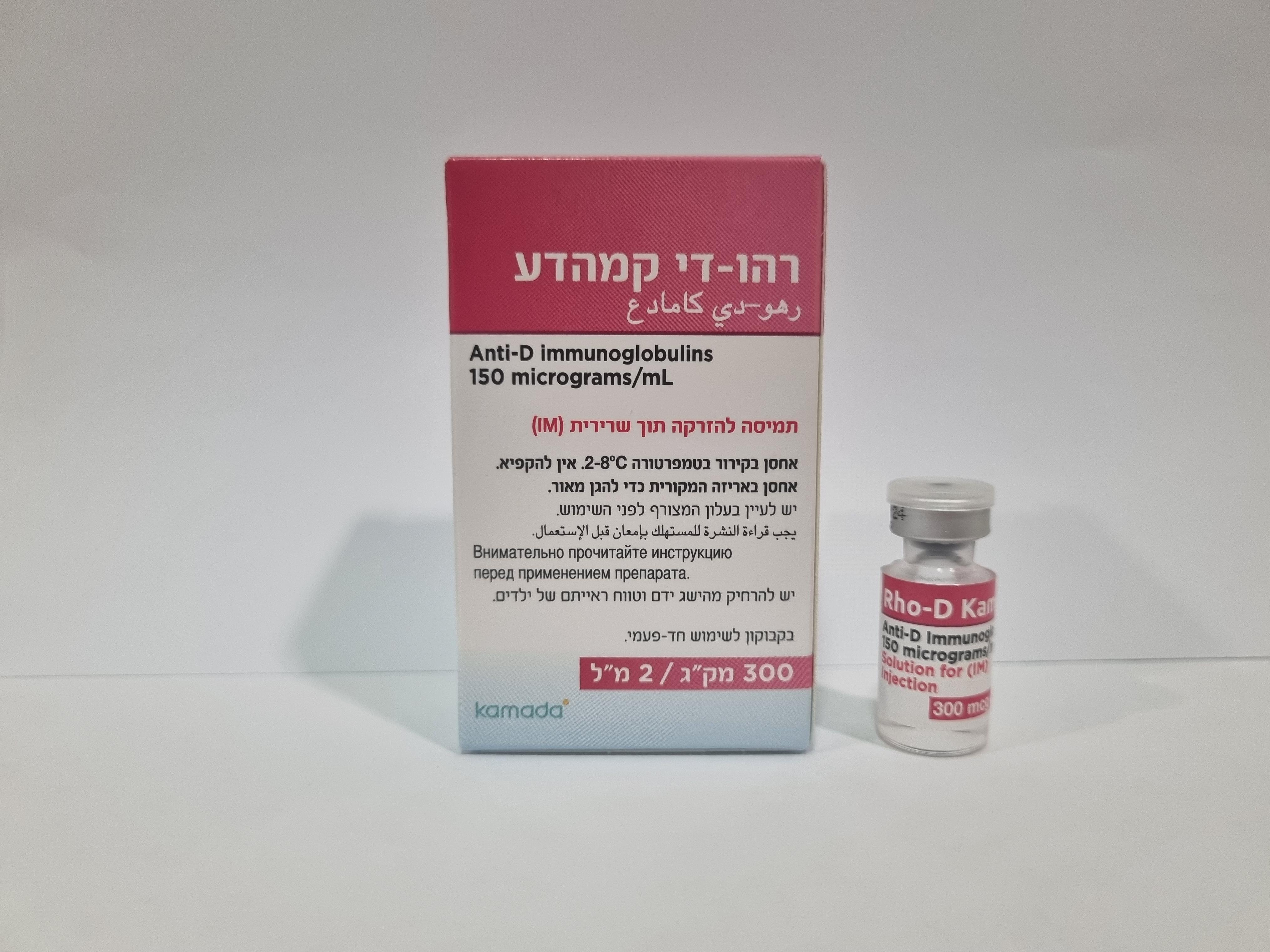Quest for the right Drug

רהו-די קמהדע RHO-D KAMADA (ANTI-D IMMUNOGLOBULINS)
תרופה במרשם
תרופה בסל
נרקוטיקה
ציטוטוקסיקה
צורת מתן:
תוך-שרירי : I.M
צורת מינון:
תמיסה להזרקה : SOLUTION FOR INJECTION
עלון לרופא
מינוניםPosology התוויות
Indications תופעות לוואי
Adverse reactions התוויות נגד
Contraindications אינטראקציות
Interactions מינון יתר
Overdose הריון/הנקה
Pregnancy & Lactation אוכלוסיות מיוחדות
Special populations תכונות פרמקולוגיות
Pharmacological properties מידע רוקחי
Pharmaceutical particulars אזהרת שימוש
Special Warning עלון לרופא
Physicians Leaflet
Pharmacological properties : תכונות פרמקולוגיות
Pharmacodynamic Properties
5.1. Pharmacodynamic properties Pharmacotherapeutic group: immune sera and immunoglobulins, immunoglobulins, specific immunoglobulins: anti-D (Rh) immunoglobulin, ATC code: J06BB01. Anti-D immunoglobulin contains specific antibodies (IgG) against the D (Rh) antigen of human erythrocytes. It can also contain antibodies to other Rh antigens e.g. anti-Rh C antibodies. During pregnancy, and especially at the time of childbirth, foetal red blood cells may enter the maternal circulation. When the woman is Rh(D)-negative and the foetus Rh(D)-positive, the woman may become immunised to the Rh(D) antigen and produce anti-Rh(D) antibodies which cross the placenta and may cause haemolytic disease of the newborn. Passive immunisation with anti-D immunoglobulin prevents Rh(D) immunisation in more than 99% of cases provided that a sufficient dose of anti-D immunoglobulin is administered soon enough after exposure to Rh(D)-positive foetal red blood cells. The mechanism by which anti-D immunoglobulin suppresses immunisation to Rh(D)-positive red cells is not known. Suppression may be related to the clearance of the red cells from the circulation before they reach immunocompetent sites or, it may be due to more complex mechanisms involving recognition of foreign antigen and antigen presentation by the appropriate cells at the appropriate sites in the presence or absence of antibody.
Pharmacokinetic Properties
5.2. Pharmacokinetic properties Absorption and Distribution Human anti-D immunoglobulin for intramuscular administration is slowly absorbed into the recipient's circulation and reaches a maximum after a delay of 2-3 days. Human anti-D immunoglobulin has a half-life of about 3-4 weeks. This half-life may vary from patient to patient. Biotransformation and Elimination IgG and IgG-complexes are broken down in cells of the reticuloendothelial system.

שימוש לפי פנקס קופ''ח כללית 1994
Prevention of sensitization of an Rh-negative mother who delivers an Rh-positive child, or after abortion
תאריך הכללה מקורי בסל
01/01/1995
הגבלות
תרופה שאושרה לשימוש כללי בקופ'ח
מידע נוסף
